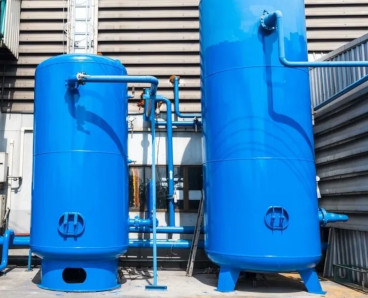Significance of Ambient Air Quality Testing at Airflo Sciences
Ambient air quality testing is of paramount importance for several reasons, as it serves to safeguard public health, protect the environment, and guide regulatory decision-making. Here are key reasons highlighting the importance of ambient air quality testing:
Public Health Protection
The primary concern of ambient air quality testing is to assess the levels of pollutants in the air that people breathe. Many air pollutants, such as particulate matter (PM), ozone (O3), sulfur dioxide (SO2), nitrogen dioxide (NO2), and carbon monoxide (CO), are known to have adverse effects on respiratory and cardiovascular health. Testing helps identify areas where pollutant levels may pose health risks to the local population.
Regulatory Compliance
Regulatory authorities use ambient air quality testing data to assess compliance with established air quality standards and guidelines. These standards are set to limit pollutant concentrations in the air to levels deemed safe for human health and the environment. Testing results play a crucial role in enforcing and adjusting these standards.
Policy Development and Evaluation
Governments and regulatory bodies rely on ambient air quality testing data to develop, evaluate, and adjust air quality management policies. This includes setting emission standards, implementing pollution control measures, and establishing vehicle emissions regulations.
Key aspects of ambient air quality testing include:
Airflo Sciences has a skilled field service team that analyzes samples in accordance with internationally recognized and locally acceptable standards. Our quality-driven and technologically advanced approach provides solutions based on the following parameters:
Pollutant Monitoring
Measurement of various air pollutants, including particulate matter (PM), nitrogen dioxide (NO2), sulfur dioxide (SO2), carbon monoxide (CO), ozone (O3), volatile organic compounds (VOCs), and others. These pollutants are commonly regulated due to their impact on human health and the environment.
Sampling Stations
Establishment of strategically located sampling stations to capture representative air quality data for a specific region. These stations are typically situated in urban, suburban, industrial, and rural areas to account for variations in pollution levels.
Periodic Sampling
Collection of air samples over specific periods, such as 24 hours, to analyze average pollutant concentrations. Periodic sampling allows for a more comprehensive evaluation of air quality over longer timeframes.
Data Analysis and Reporting
Analysis of the collected data to generate air quality reports. These reports often include information on pollutant concentrations, trends, compliance status, and recommendations for mitigating air quality issues.
Why Choose Airflo Sciences For Ambient Air Quality Testing
Choose Airflo Sciences for Ambient Air Quality Testing, where our unwavering commitment to precision, cutting-edge technology, and a holistic approach to environmental stewardship ensures that you receive accurate, actionable data to safeguard public health and enhance the quality of the air we all breathe.
Additional Knowledge
Regulations and Policy
Frequently Asked Questions (FAQs)
What is ambient air quality testing?
Ambient air quality testing involves monitoring and analyzing the outdoor air in the surrounding environment to assess the presence and concentration of various pollutants. This testing helps evaluate the overall air quality and potential health risks for the community.
Why is ambient air quality testing important?
Ambient air quality testing is crucial for understanding the levels of pollutants in the air that can impact public health and the environment. It provides data to support regulatory compliance, assess the effectiveness of pollution control measures, and guide public policies for air quality improvement.
What pollutants are typically monitored in ambient air quality testing?
ommon challenges in HVAC validation include ensuring accurate and representative testing conditions, meeting evolving regulatory requirements, addressing variations in system performance, and coordinating validation activities with ongoing operations. Overcoming these challenges requires careful planning, documentation, and adherence to industry standards.
How often is ambient air quality testing conducted?
The frequency of ambient air quality testing depends on regulatory requirements, local environmental conditions, and potential sources of pollution. Regular testing is often conducted to provide continuous data on air quality trends, identify emerging issues, and assess the effectiveness of air quality management strategies.
How can the public access ambient air quality data?
Ambient air quality data is often made available to the public through environmental agencies, government websites, and air quality monitoring stations. Many regions have online platforms or apps that provide real-time air quality updates, allowing the public to stay informed about the quality of the air they breathe.





